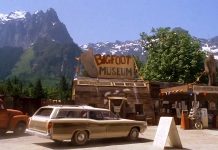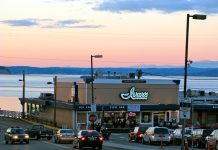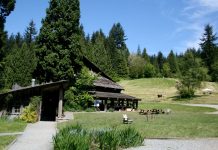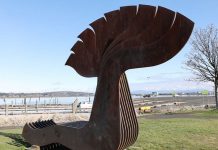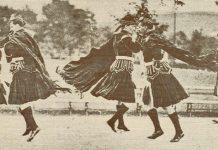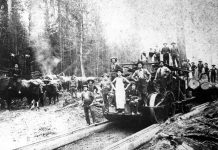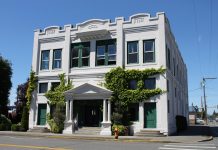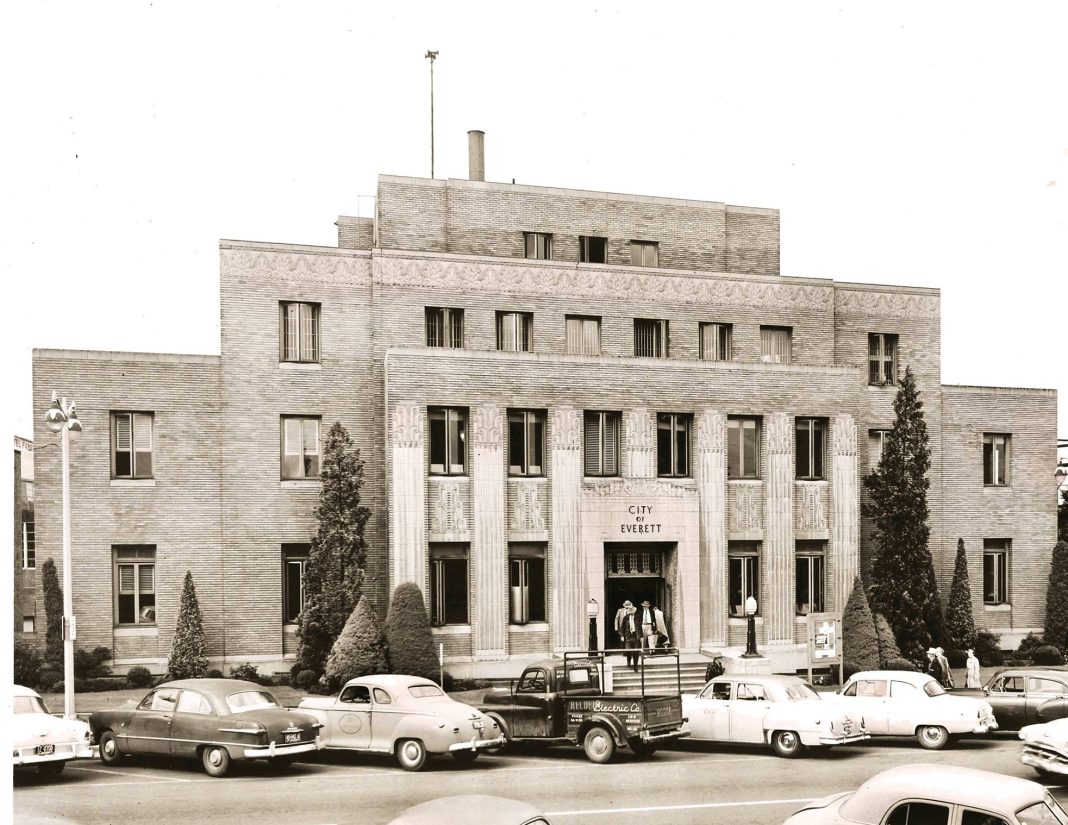For more than 10,000 years, the waters of Everett have flowed with a rich history that has spread across the land, carrying over to the city streets and telling the stories of travelers past and present. Though much has changed in terms of scenery over the decades, there are still plenty of historic buildings scattered throughout the city, providing a tangible link to history community members can still explore today as they’re transported back in time to what once was in Everett. Many historic buildings in Everett still stand today to tell the tales of the past for those who look between then and now.
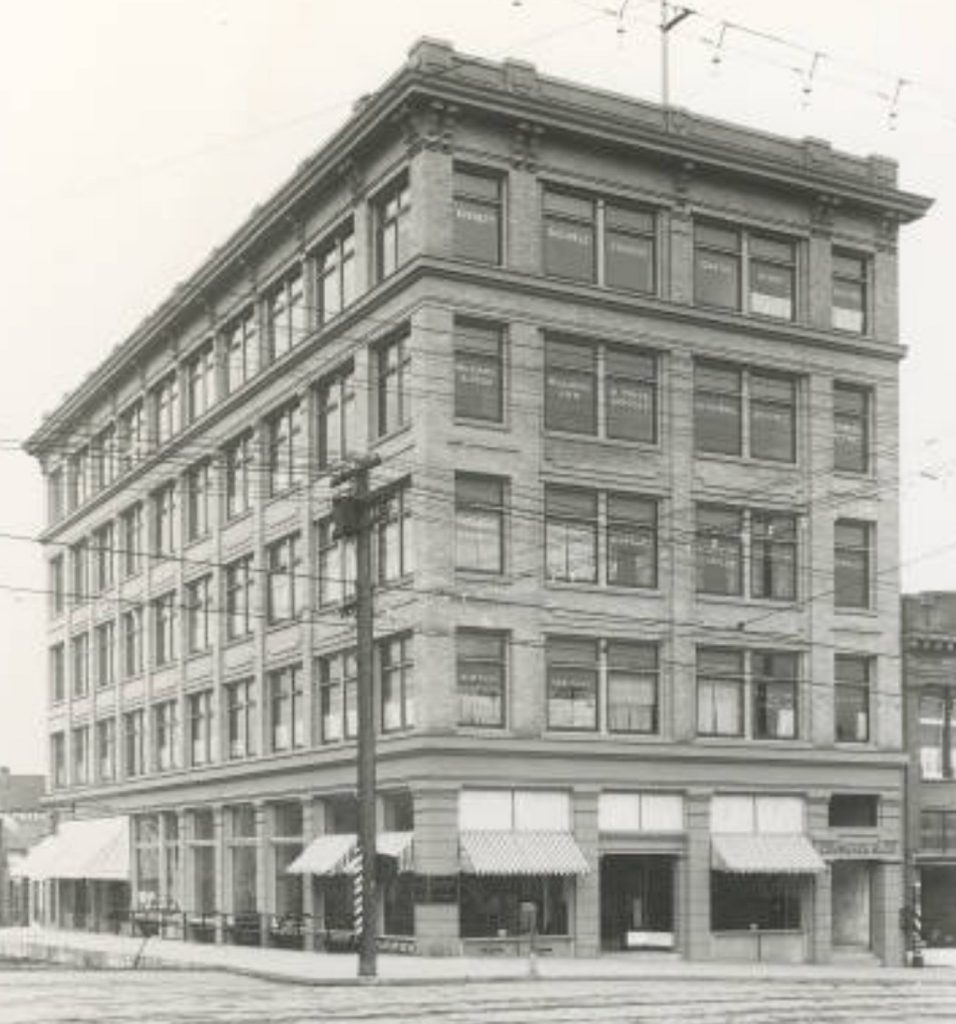
Commerce Building
1801 Hewitt Avenue
Part of the Hewitt Avenue Historic District, Everett’s Commerce Building is a five-story structure that was built in 1910 at only the cost of $100,000. Designed by noted local architect Benjamin Franklin Turnbull, the building has been nothing but business since its resurrection.
Turnbull, who was responsible for several other commercial buildings in Everett and numerous residential structures, even had his own office in the building from 1910 until 1927, when his career in Everett drew to a close. Office spaces predominated on the building’s second through fourth floors, while the Everett Business School solely occupied the top floor — a fitting location indeed.
At the time of its nomination into the National Register of Historic Places in 1992, the building sat vacant. However, this was quickly remedied in 1993, when it became an affordable housing community managed by the non-profit organization Housing Hope. Today, apartments from their converted 48 assisted studio rental units are still available for rent, providing residents a unique opportunity to literally live inside a piece of Everett’s history.
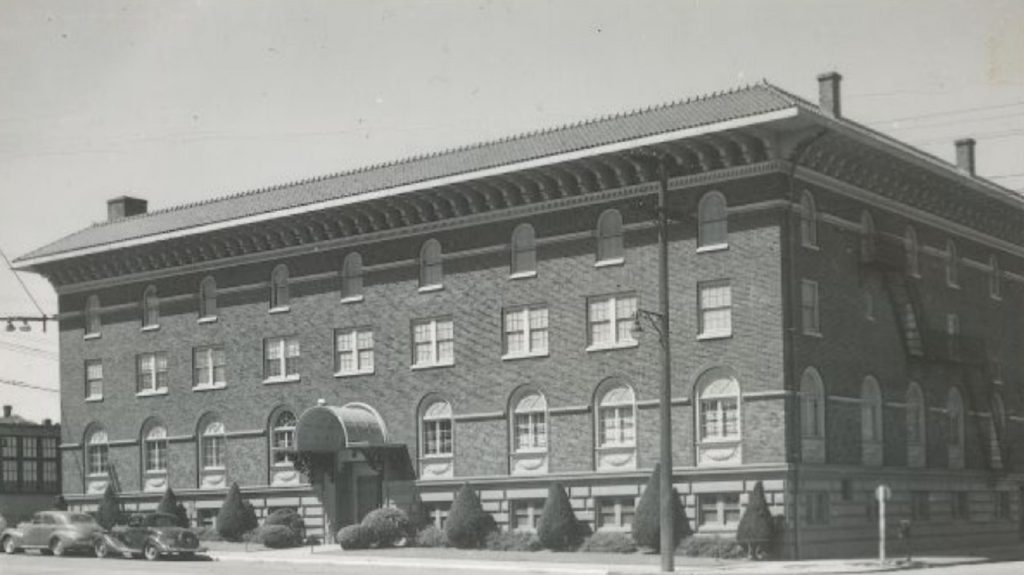
Community Center and War Memorial Building
1611 Everett Avenue
With 550 members, the Knights of Columbus was one of Everett’s larger men’s organizations in the early 1920s. They wanted to honor 41 of their members who served in World War I, so they began work on their Community Center and War Memorial Building in 1921.
At the time, their subscription campaign coincided with the YMCA’s efforts to raise money for their new building, which is perhaps why the building featured a gymnasium and swimming pool, just like that of the YMCA. The Second Renaissance Revival style building cost a total of $110,00, plus an additional $25,000 in furnishings and equipment.
Sadly, the reign of the Knights of Columbus at the location wouldn’t last long, as, by 1926, membership had dropped down to 350. Only two years later, they would turn over the property to the Masonic Order, being known as the Masonic Temple from then on. They filled the swimming pool fairly early into their residency at the location.
With the original building’s vast amount of large rooms, including a basement that could seat 700 to 800 people, a ladies parlor and billiard room on the main floor, a Grand Lodge Hall on the second story, and a theater that could seat 800, it is now the perfect home for the APEX Art and Culture Center and the steakhouse 16Eleven that features live music.
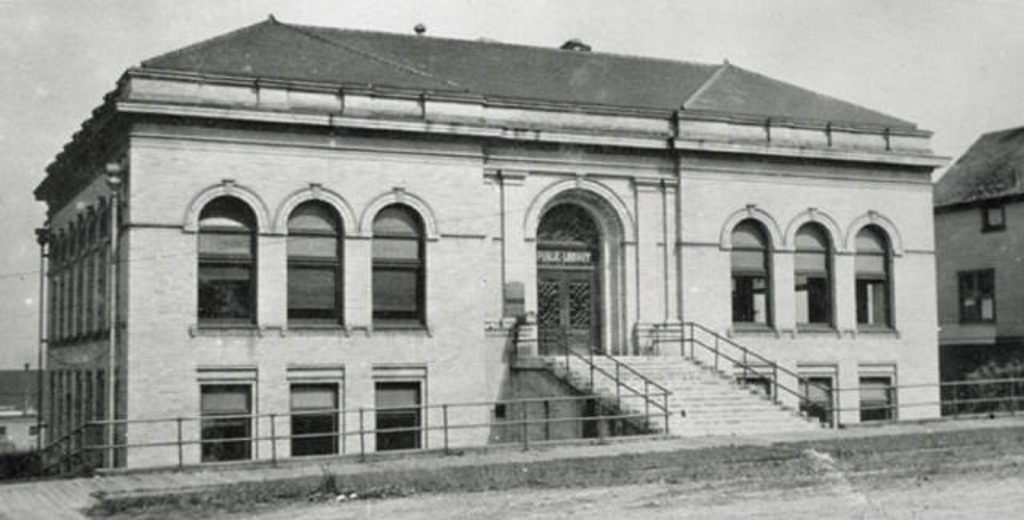
Everett Carnegie Library
3001 Oakes Avenue
Constructed in 1904 with a gift of $25,000 from philanthropist Andrew Carnegie, the Everett Carnegie Library is just one of many Carnegie libraries scattered throughout the world. Architectural firm Heide and deNeuf designed the building using the Panomna, California Public Library and Boston Public Library as models. To this date, it is still considered one of the finest examples of the Second Renaissance Revival style.
Opening its doors on July 1, 1905, it housed 4,000 newly purchased volumes that filled the shelves. It operated as the city’s library until 1934 when the new Everett Public Library superseded it on Hoyt Avenue. From 1934 until 1980, the building was used as a mortuary known as the Cassidy Funeral Home, with the new owners preserving the historic details of the building.
Snohomish County then took ownership of the building, with the facility serving as the office of the County Executive, when the county had adopted a home rule form of government. As the county government’s size and facilities expanded over the years, the building was subsequently used for other county departments, including operating as the Snohomish County Museum of History for three years until their lease ended in 2011.
It sat vacant for a time before taking on its new role in 2018 when it was given a facelift and reopened as the Carnegie Resource Center. It now operates as a service hub for individuals across Snohomish County, allowing them to become connected to a wide range of community services, such as housing, mental health, and substance abuse treatment.
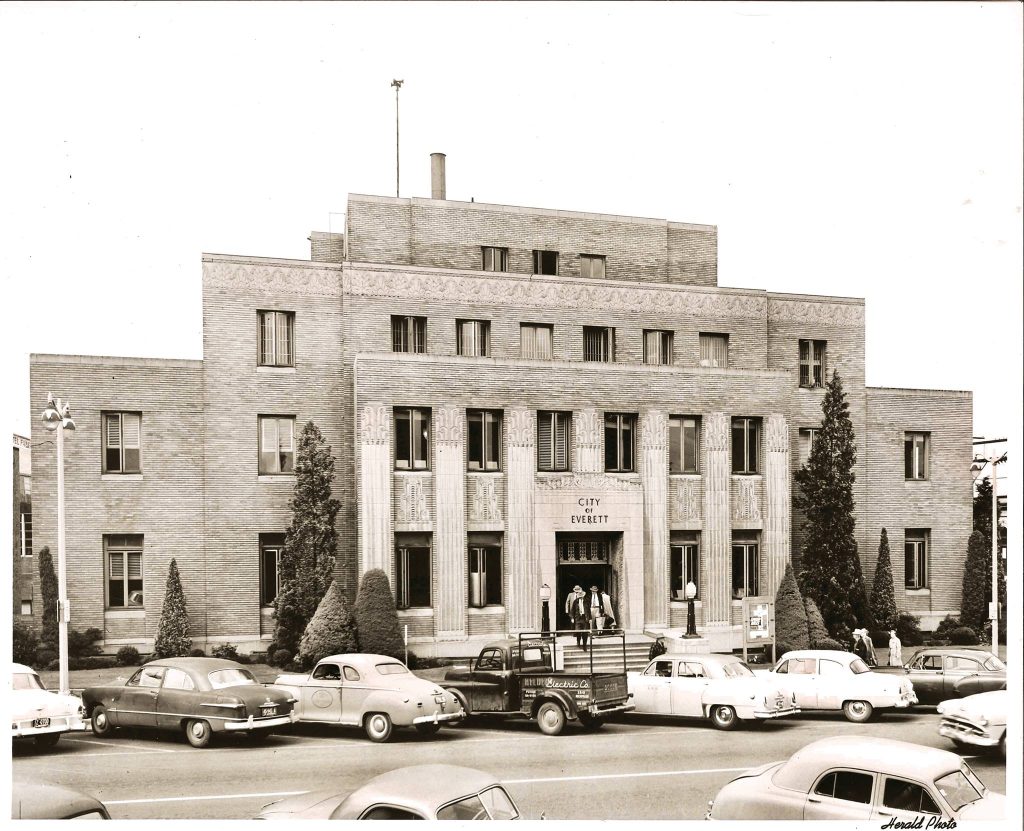
Everett City Hall
3002 Wetmore Avenue
Built in 1929, the building that now sits at 3002 Wetmore Avenue originally served as Everett City Hall. It underwent an extensive renovation from 1977 until 1979, but alas, for all practical purposes, it no longer serves this role as of 1993, when the mayor’s office and city administration were relocated to the city’s newly purchased nearby Wall Street Building.
Today, the building currently houses the Everett Police Department and hosts the occasional city council meeting. Eventually, the building was named the William E. Moore Historic City Hall in 2012 in honor of Bill Moore, who served as Everett’s mayor from 1977 until 1990.
Floral Hall
802 E Mukilteo Blvd. #205
Now an event venue, Floral Hall was built in 1939 with funds provided by part of the Works Progress Administration during the Great Depression of the 1930s. The idea for constructing the building originated with members of the Snohomish County Gladiolus Society, who successfully persuaded the city to create an exhibition hall dedicated to flower shows and community events.
Designed to employ the Rustic Style of federal park architecture, the hall has since become Forest Park’s most significant building. The building experienced a remodel in 1963 and another renovation in 1989. Over the years, it has become a community center, providing a place for exhibits, music events, city and community meetings, programs, weddings, and more.
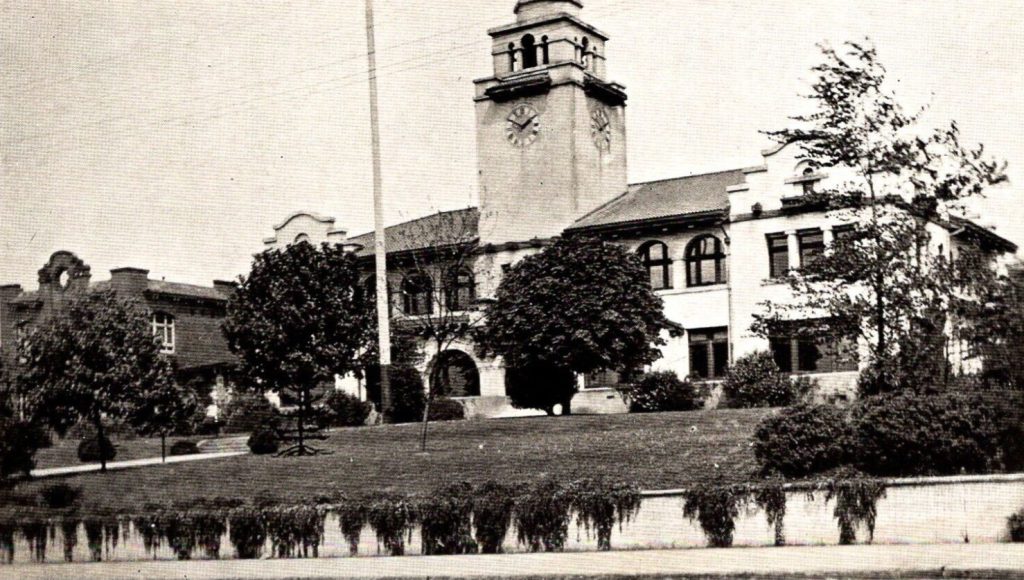
Snohomish County Courthouse
3021 Wetmore Avenue
Serving residents of the county for more than 100 years is the Snohomish County Courthouse. The original courthouse was built in 1897 but was destroyed in a fire on August 2, 1909. The present courthouse was built on the ashes from 1909 until 1911 by August F Heide, the same local architect who had designed the original.
Two wings were added in 1953, and another five-story wing was added in 1967. In the early 2000s, grant funding was used to restore the fabric of the original 1922 building to its original appearance, and later, in 1967, it underwent its own renovations from 2018 until 2021. Today, it is the closest thing Everett has to a capitol building and is considered one of the most important buildings in the county historically.
Many buildings have come and gone in Everett, but thanks to the National Register of Historic Places, these historic buildings will forever remain, preserving the rich history of Snohomish’s largest city.





